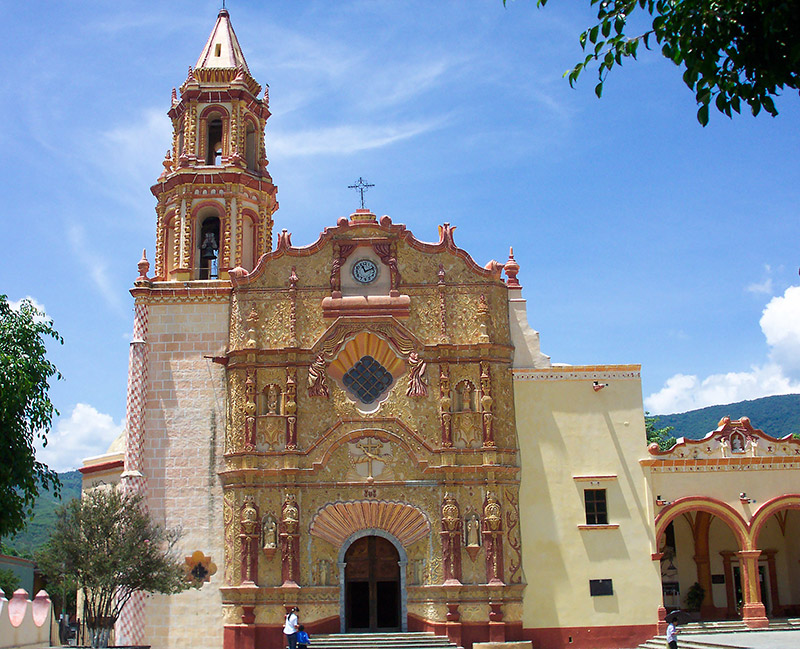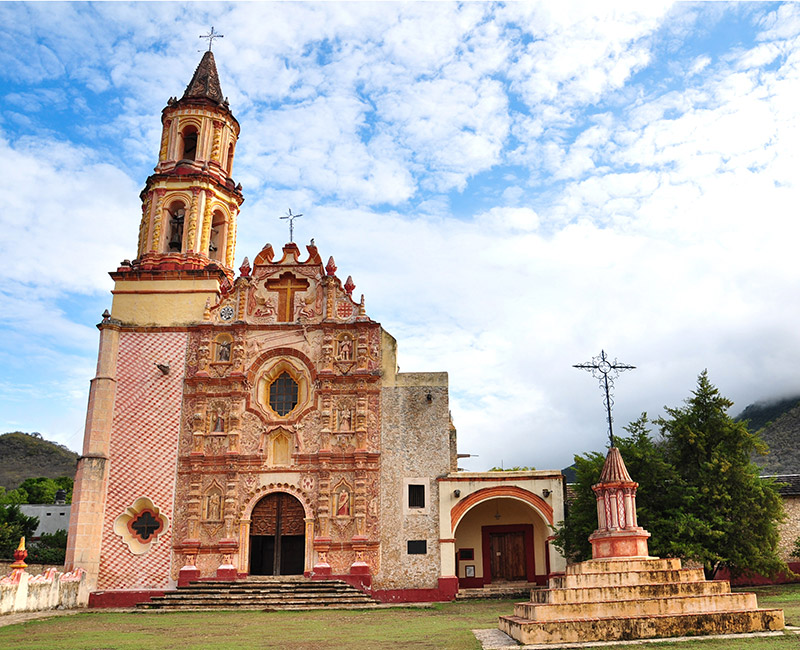
FRANCISCAN MISSIONS, CULTURAL HERITAGE OF HUMANITY
Mission of Jalpan: The defense of the faith
The missionary temple of Jalpan was built between 1751 and 1758 by Fray Junípero Serra, now San Junípero and is dedicated to the Apostle Santiago. Because it is the first of the five missions to be built, it means the defense of the faith and was destined to strengthen the new dogma by fulfilling an important evangelizing task. In the first body of the facade, you can see the figures of Saint Domingo and San Francisco, propagators of the faith. Here you can also see the small shield of the five wounds and the shield of the Franciscan order, which signifies the triumph over the idolatry of the natives. It is the same victory that the apostles Saint Peter and Saint Paul had, whose images are located in the inner frame of the door as pillars of the Catholic Church. In the lower part of the facade there is a unique iconographic detail: the Hispanic-Mexican double-headed eagle, like the imperial of the Habsburgs and the Mexican devouring a snake.
On the upper left, is the image of Our Lady of Guadalupe and on the right is the Virgen Del Pilar. The spiritual patrons of Mexico and Spain were placed at the same level, symbolizing the equality of forces of both worlds.
Mission of Tancoyol: Mercy
This mission is dedicated to Our Lady of Light. It is possible that its author is Fray Juan Ramos de Lora, who lived in Tancoyol from 1760 to 1766. The theme of divine mercy is represented by the interventions of the Virgin and the Saints.
The cover of Tancoyol is iconographically the most elaborate. In this one you can see traditional details of European constructions, such as images of Saint Peter and Saint Paul, founders of the church. They are accompanied by the Franciscan shields.
The facade stands out for its choral window, under which was the Virgin of Our Lady of Light, that has now disappeared. To the sides are his parents San Joaquín and Santa Ana. San Roque appears preventing the plague with his presence. Completing the picture there is the stigmatization of Saint Francis with the wounds of Jesus. At the top, the great triumphal cross is the sign of the redemption of mankind; the crosses of Calatrava and Jerusalem are located to its sides.
The indigenous spirit is present in the columns inside the temple, venerated by a jaguar and a character with Olmec features.





